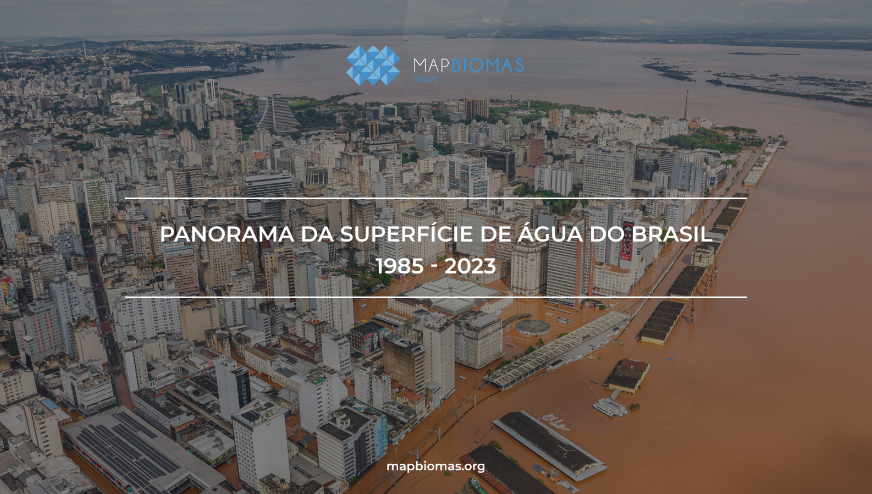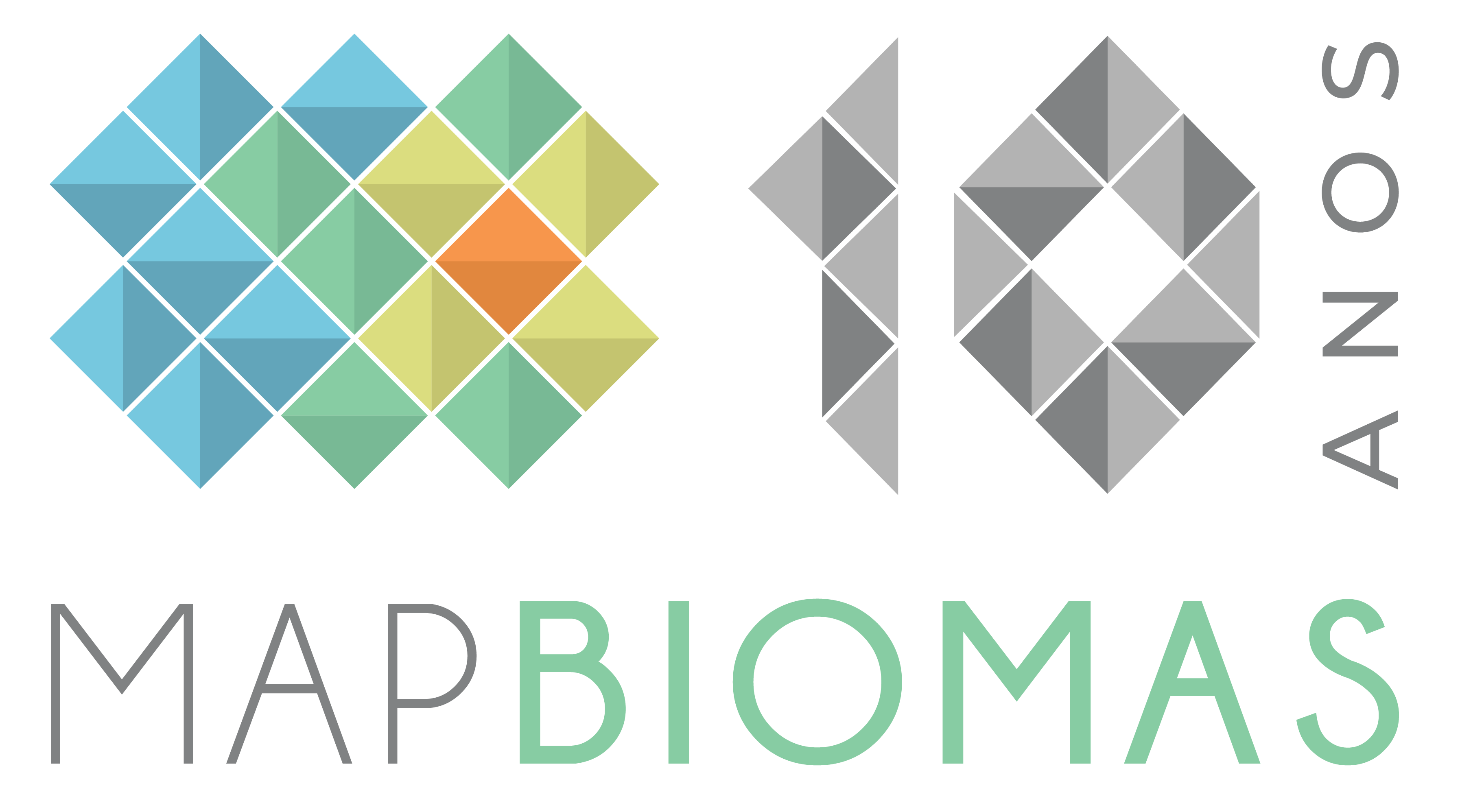In terms of size, the Amazon is the biome that has lost the most surface water; proportionally, the Pantanal is the biome that has dried up the most since 1985
June 26th, 2024
Water covered 18.3 million hectares of Brazil, or 2% of the national territory, in 2023. Although this is twice the area of a country like Portugal, it represents a drop of 1.5% compared to the historical average. There was a loss of water in every month of 2023 compared to 2022, including the months of the rainy season. The last time there was a reduction in the water surface in Brazil was in 2021, when there was a 7% reduction. The data comes from MapBiomas Água, which is launching a new collection of maps and data covering the period between 1985 and 2023 on Wednesday (26/06). The biomes have been suffering from the loss of surface water since 2000, with the 2010s being the most critical decade. Translated with DeepL.com (free version)
>> Access the main highlights of MapBiomas Water Collection 3
In natural water bodies, the situation is different: there will be a drop of 30.8% or 6.3 million hectares in 2023 compared to 1985. Half (6) of the country's river basins were below the historical average in 2023 - a similar percentage to level 1 sub-basins (53%, or 44 of them) and level 2 sub-basins (57%, or 156 sub-basins).
The water surface in ten states, or just over a third (37%) of the federal units, was below the historical average in 2023. The most severe cases occurred in the states of Mato Grosso and Mato Grosso do Sul, with a loss of water surface of 274,000 hectares (-33%) and 263,000 hectares (-30%), respectively. In the case of municipalities, more than half were below the historical average (53%, or 2,925). The municipality of Corumbá (MS) lost the most water area in 2023 compared to the historical series average: 261,000 hectares (-53%).
"While the Cerrado and Caatinga are experiencing an increase in surface water due to the creation of hydroelectric dams and reservoirs, others, such as the Amazon and Pantanal, are facing a serious reduction in water, leading to significant ecological, social and economic impacts. These trends, aggravated by climate change, highlight the urgent need for adaptive water management strategies," says Juliano Schirmbeck, Technical Coordinator of MapBiomas Water.
The Amazon is home to half of Brazil's water surface
More than half of the country's water surface is in the Amazon: 62% of the national total. In 2023, the biome had a water surface of almost 12 million hectares or 2.8% of the biome's surface. This total represents a decrease of 3.3 million hectares compared to 2022. In 2023, the Amazon suffered a severe drought: from July to December it was below the MapBiomas Water historical average, with October to December recording the lowest water surfaces in the series.
"There has been isolation of populations and deaths of fish, dolphins and tucuxis," points out Carlos Souza Jr, coordinator of MapBiomas Água.
Pantanal: the biome that has dried up the most
In relation to the size of the biome itself, the Pantanal was the biome that dried up the most during the MapBiomas Water time series, which covers the period between 1985 and 2023. The annual water surface (at least 6 months with water) in 2023 was 382,000 hectares - 61% below the historical average. There has been a reduction in the area flooded and the length of time the water remains. Last year, only 2.6% of the biome was covered by water. The Pantanal accounts for 2% of the country's total water surface.
The year 2023 was 50% drier than 2018, which was the last major flood in the biome. In 2018, the water in the Pantanal was already below the average of the historical series, which compares data since 1985. "In 2024, we didn't have a flood peak. The year has seen a peak drought, which should last until September. The Pantanal in extreme drought is already facing fires that are difficult to control," says Eduardo Rosa, from MapBiomas.
Cerrado: record water surface since 1985
In 2023, the Cerrado had its largest water surface since 1985: 1.6 million hectares or 9% of the national total. This total is 11% above the historical average for the biome. The gain in water surface area occurred in anthropogenic areas, which increased by 363,000 hectares - a positive variation of 56.4%. Natural bodies of water, on the other hand, lost 696,000 hectares - a drop of 53.4%.
In 2023, natural bodies of water occupied 608,000 hectares of the Cerrado, or 37.5% of the biome's water coverage and 9% of the national total. The remaining 62.5% was mainly divided between hydroelectric dams (828,000 hectares; 51.1%) and reservoirs (181,000 hectares; 11.2%). "Since 2003, the surface area of water used to generate energy and supply urban centers has exceeded the area of natural water in the Cerrado. However, these reservoirs are supplied by natural bodies of water which have been reduced in recent decades," comments Joaquim Pereira, from MapBiomas.
Caatinga registers increase in water surface in 2023
After a long period of drought, which lasted seven years and resulted in one of the biggest droughts in the Northeast, since 2018 it has been possible to see a trend towards an increase in the surface area of water in the Caatinga and the consolidation of a wetter cycle in the biome. As a result, 2023 recorded a water surface of almost 975,000 hectares - 6% above the historical average and 5% of the national total.
A 2023 INPE/CEMADEN study identified, for the first time, an area considered arid in Brazil, located in the Caatinga biome, in the São Francisco basin, in northern Bahia. When analyzing data from MapBiomas Água for the same period (1990 to 2020), it was also possible to identify a reduction in water surface in 7 of the 8 municipalities located in the region of the aforementioned study.
"Based on the 2023 data, in general, in the Caatinga biome, we are in a period of consolidation of a wetter cycle, which guarantees greater water availability in the drier regions of Brazilian territory. However, we must be aware of the existence of localized droughts and that, despite the rainy cycle, the data shows a general trend towards a reduction in the water surface, even with the constant growth of artificial reservoirs throughout the biome," says Diêgo Costa, from MapBiomas.
Pampa has lowest water surface in reservoirs in historical series: 40% below average
Ten percent of Brazil's water surface in 2023 will be in the Pampa: more than 1.7 million hectares or 9.2% of the biome's territory. The water surface area of the Pampa's reservoirs was 40% lower than the average for the historical series. "In 2023, the Pampa had the driest first four months of the historical series. The first four months of 2023 were among the five driest months in the series," says Juliano Schirmbeck. The floods in Rio Grande do Sul between September and November recovered the water surface in the Pampa, but it still remained 2% below the historical average.
Atlantic Rainforest with rainfall extremes
The surface area of water in the Atlantic Forest in 2023 was 3% above the historical average, surpassing 2.2 million hectares or 12% and second place of the national total. Water accounts for 2% of the biome's surface area. "In 2023, the Atlantic Forest recorded high levels of rainfall in some municipalities, leading to flooding in agricultural areas and landslides," adds Fernando Paternost, from MapBiomas. The Atlantic Forest is the biome with the largest anthropogenic water surface area, where the surface area of water in hydroelectric dams and reservoirs is greater than the surface area of natural water.


